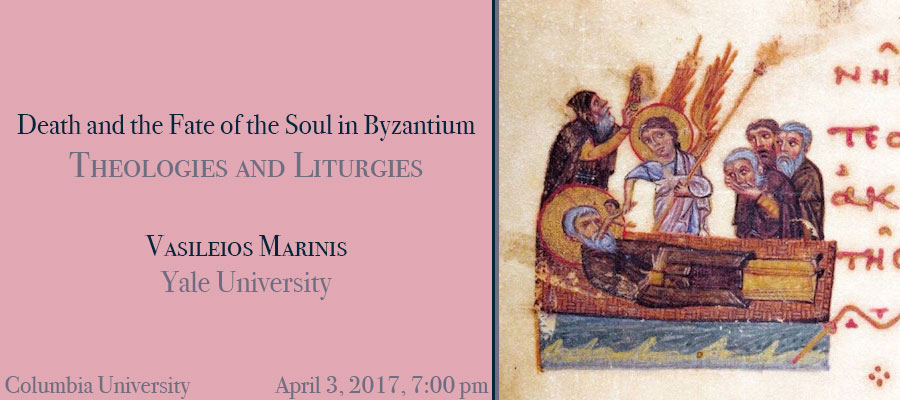Death and the Fate of the Soul in Byzantium: Theologies and Liturgies, lecture by Vasileios Marinis (Yale University), Columbia University, Schermerhorn Hall, Room 832, April 3, 2017, 7:00 pm
What did the Byzantines believe happened to the soul after death and until the final resurrection and Last Judgment? In order to answer this question, the lecture investigates two important sources: the tenth–century Life of Basil the Younger, which contains the most complete account of a soul’s fate after death in the form of a vision; and funerary services from manuscripts dating from the eighth to the thirteenth centuries. Despite some similarities, the two sources present fascinating variations. The talk traces their origins, investigates their functions, and explains—or at least contextualizes—some of their peculiarities.
Vasileios Marinis is Associate Professor of Christian Art and Architecture at Yale Divinity School. Professor Marinis has published on a variety of topics ranging from early Christian tunics decorated with New Testament scenes to medieval tombs, graffiti, and Byzantine transvestite nuns. His monograph on the interchange of architecture and ritual in the medieval churches of Constantinople was published by Cambridge University Press in 2014. His second book, Death and the Afterlife in Byzantium: The Fate of the Soul in Theology, Liturgy, and Art, was released by Cambridge University Press earlier this year.
Following the lecture, chanters of the Axion Estin Foundation will perform Byzantine a cappella hymns of the Holy Week.
